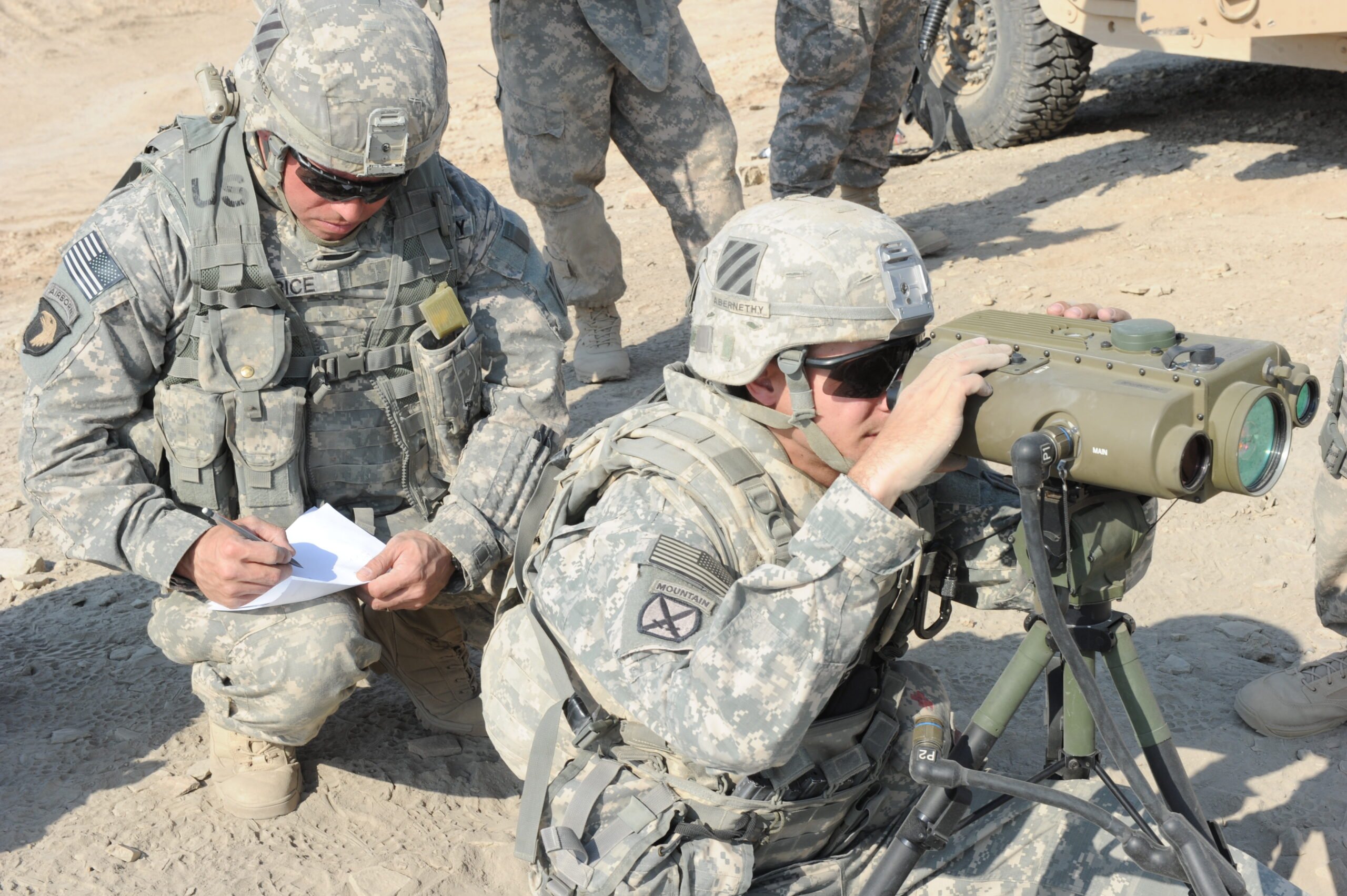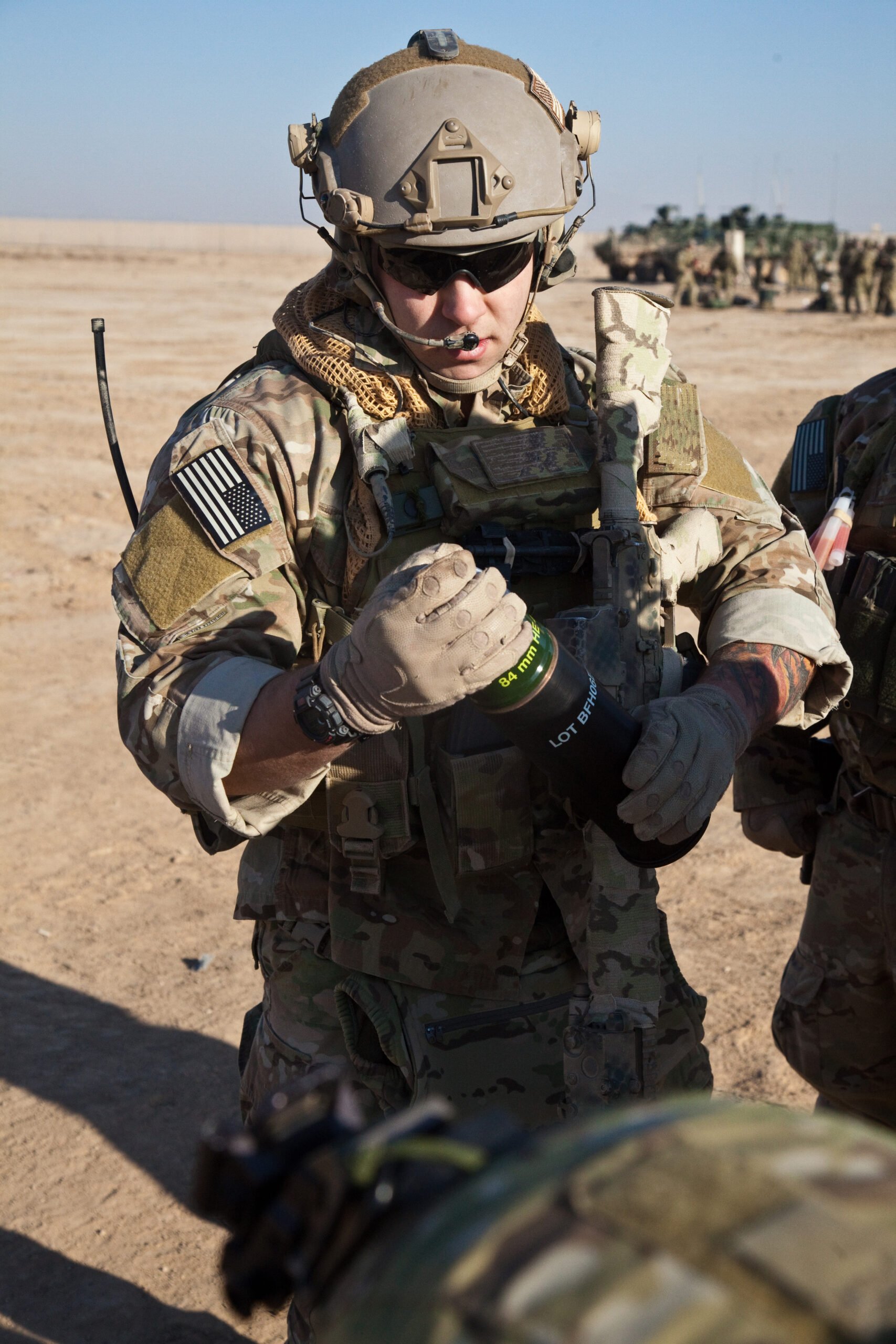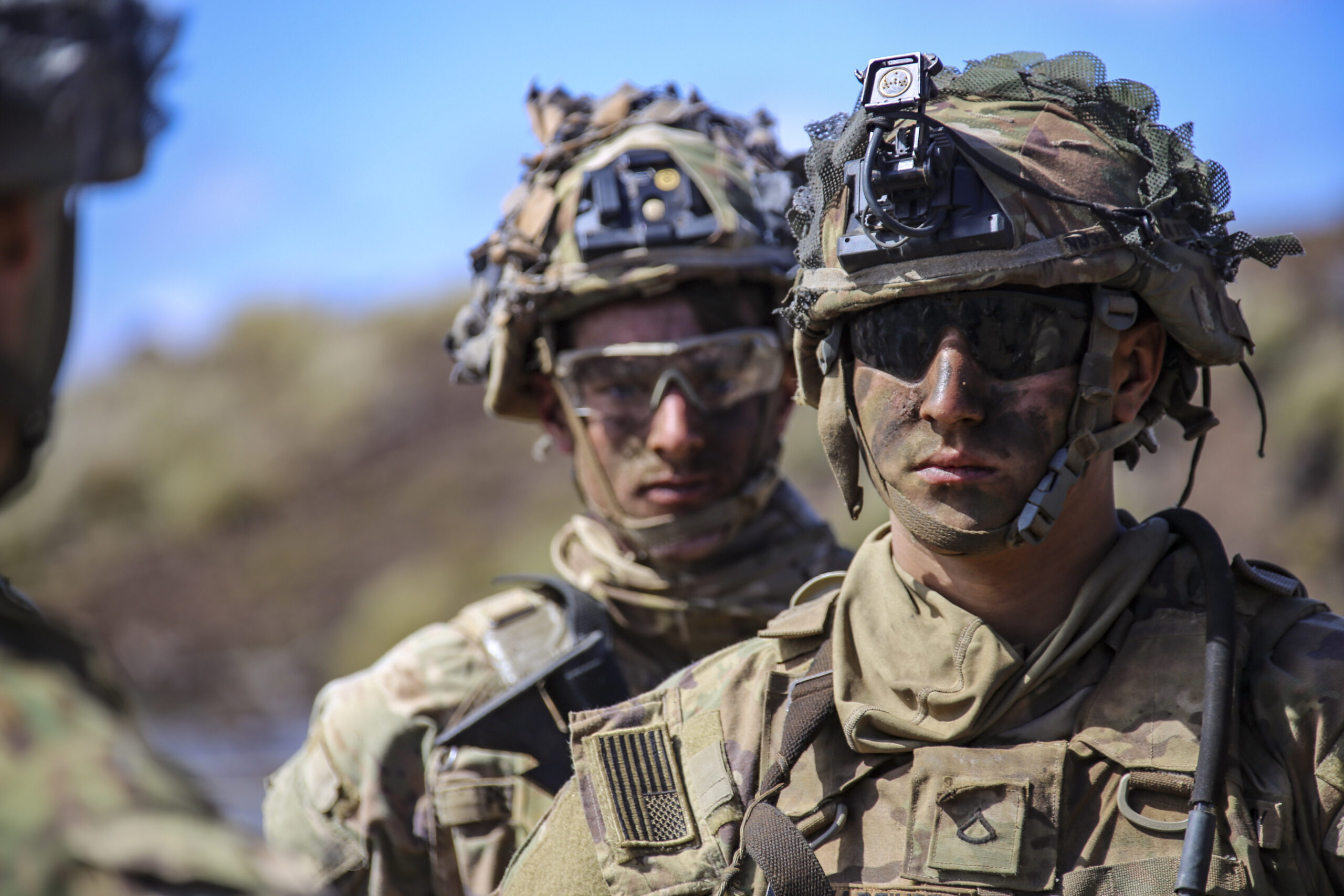
A U.S. Army joint forward observer gathers coordinates for attack helicopters on Besmaya Range, Forward Operating Base Hammer, Iraq. The JFOs performed refresher training by identifying targets and providing grid coordinates for a variety of aircraft to attack. (U.S. Army photo by Photo by Spc. Gary Silverman)
The U.S. Army’s Program Executive Office for Simulation, Training and Instrumentation (PEO STRI) is recompeting its Training Aids, Devices, Simulators and Simulations (TADSS) operations and maintenance contract and expanding its scope to include enterprise training-related services for live, virtual, constructive capabilities under a new program called Warfighter Training and Readiness Solutions (W-TRS).
In this Q&A, HII Mission Technologies’ Mike Waterman, business area director, and John Bell, technical director, LVC Solutions, discuss how the company’s work on the U.S. Navy’s Continuous Training Environment (NCTE), which includes more than 1,200 secure, interconnected nodes across the U.S. and partner nations, and the Navy Integrated Training Environment (NITE), which combines operations of live training ranges with virtual and constructive environments, would translate to the W-TRS program.
Breaking Defense: What necessitates the need for the W-TRS program?
Waterman: PEO STRI has the challenge of managing a growing network of systems such as training networks and live ranges to create an increasingly effective training environment that addresses the needs of the warfighter. How this applies to W-TRS is that the scope of the program will include more than operations and maintenance of their training aids and devices currently supported on the Army TADSS Maintenance Program (ATMP).
It will include innovative training services at the combat training centers (CTCs), some mission command training, crew-level training, and integrating and maintaining live, virtual and constructive (LVC) networks and systems.
As this evolves from operations and maintenance of the current TADSS contract, it will become more challenging with additional and increasingly modernized systems. It demands an innovative, enterprise-level approach responsive to warfighter training needs.
Bell: Another aspect of how the warfighting challenge is evolving is that our forces work in a tightly integrated and networked world. We’re seeing that in current conflicts where the ability for our forces to work together across services and with our coalition partners is paramount.
Operating weapons systems that are networked together with other weapons and sensors as part of the Combined Joint All Domain Command and Control (CJADC2) concept requires warfighters to train in a very different environment than we trained in even five or 10 years ago.
That’s very difficult to do without complex network systems on our training ranges that connect together our ranges across services. It requires networks that bring together different weapons systems so they work on the training range just like they would work in the real world.
The ability of modeling and simulation to help replicate that kind of environment on the training ranges is becoming more important. That complexity is driving the need for W-TRS, a more complex requirement for warfighter training services.

A coalition soldier participates in training at a firing range in Helmand province, Afghanistan. (U.S. Army Photo by Spc. Matthew R. Hulett)
Breaking Defense: What capabilities or enablers are needed to execute the W-TRS program?
Bell: Connecting everything together with advanced networking technology is important. A critical theme is “enterprise.” That means treating all the Army’s training ranges as a single enterprise — the way we address their O&M.
Network interconnectivity is going to be critical so Army warfighters can train with other services in a collaborative environment and scale the training up to joint-domain training.
Waterman: W-TRS will need to address those needs in a way that accommodates or adapts to the growth that John is talking about. The systems need an ability to scale up and provide integration and modernization capability. It’s an evolving and broader-scoped offering to be able to accommodate growth and modernization.
Breaking Defense: How does the enterprise training you do for the Navy under NCTE and NITE translate to what the Army is looking for with W-TRS?
Waterman: With the Navy and Army, you’re obviously looking at different domains and challenges. But conceptually, it’s similar.
With the Navy, HII provides training range O&M, coordinates live and synthetic training events, and provides cybersecurity for global network operations and infrastructures. These training environments include: swamp, mountainous, high desert, open ocean, undersea, and large aerial environments; live mission ranges for shooting, bombing, bombardment, air-to-air combat, air-to-ground, ship-to-ship and ship-to-air engagements; and simulated wartime signal traffic for encryption and jamming.
We’ve spent years integrating the training systems on ships, for instance, and integrating with air simulators to create an LVC training environment. We’ve got experience managing large-scale training environments over multiple AORs with a requirement for not only the engineering support but also the operational support and logistics of maintaining that enterprise. With the lessons we’ve learned, the process we have in place is tailorable and scalable for the Army.
The initial demand with W-TRS is to focus on the O&M of the current TADSS, to make sure we have an innovative, enterprise approach to the sustainment and maintenance of the training systems. Many of the technologies we’ve developed across HII using AI/ML and management of big data can be applied to the O&M process because we are looking at over 400 sites with unique characteristics.
We will be able to provide transparency and immediate status of systems across the enterprise and have logistics systems set up to respond immediately to dynamic and emerging needs.
Bell: I would add that the approach is both technical and programmatic. The Army has major programs underway to develop LVC capabilities at Army level scale and scope. We have developed many approaches in our work for the Navy that bring together multiple developers and programs that are creating their own training systems for their own weapon systems.
They all have the requirement to support LVC training with an objective of integrating systems into an LVC training environment. However, when it actually comes time to plug it all together and make it work, of course, it never works perfectly the first time around. That means a lot of what we do in the Navy is related to standards, automated and integration testing, rapid troubleshooting, and developing quick workarounds using our network tools to bring these disparate systems together.
Even though the Army has some comprehensive and large programs for developing LVC, they won’t replace all of the existing systems they’re using on the ranges right away. As the synthetic training environment and LVC capability for the Army grows and evolves, especially on the ranges, there will be sustained need for the O&M of those ranges to make all this function properly together.
Our ability to do complex troubleshooting and analysis and testing is something that will be useful as this training environment gets more complex.
Waterman: The Army has made the point that every training site is unique with different focus and systems at each location. If you don’t come away with an adaptable and agile solution, you’re going to fail because there’s no ‘one size fits all.’
An important lesson we’ve applied throughout the Navy training enterprise is to have a process that’s flexible, adaptable and recognizes that there’s a difference at each training site. You have to be able to adapt to those demands. That means not having a rigid process or solution.

U.S. soldiers conduct an after-action review after completing a squad live-fire exercise in Hawaii. Training on fundamental skills gives soldiers the opportunity to hone their craft with varied weapons systems on difficult terrain. (U.S. Army photo by Staff Sgt. Thomas Calvert)
Breaking Defense: HII also does work for the Air Force in these areas. What experience have you gained that would also apply to W-TRS?
Bell: The Air Force has not moved into a fully LVC environment on the ranges to the degree that the Navy has and to the degree that the Army is doing. However, something that is applicable from the Air Force is that each of the distributed mission operation networks we support for them is run as an enterprise network.
In addition, I mentioned the use of automated tools for testing the integration of systems and verifying those as you start up an exercise. You need to ensure that all the systems across the enterprise are operating properly and do that rapidly in an automated fashion to get any issues resolved so the start of the exercise isn’t delayed. Some of the tools and processes we use for the thousands of exercises we run each quarter for the Air Force are directly applicable for the Army.
Breaking Defense: Final thoughts?
Bell: The team of proven performers we brought together, combined with our experience and capabilities for conducting operations and maintenance on the Navy’s live training ranges, gives us the experience and ability to bring a select group of PEO-STRI and DoD proven performers that assure continued operation of the training systems on the ranges under W-TRS.
Second, our approach to innovation in logistics and maintenance is to transform training system tools and analytics to improve the operation of those systems, especially as they become more complex. We will share data with the government to help them better understand the best approaches to take for doing maintenance more efficiently and to make systems highly available.
Waterman: As Army ranges and systems get more complex and include disparate systems from different providers and networks, HII has a proven track record of quickly integrating LVC systems into an effective training enterprise.
Disclaimer: The appearance of U.S. Department of Defense (DoD) visual information does not imply or constitute DoD endorsement.





















